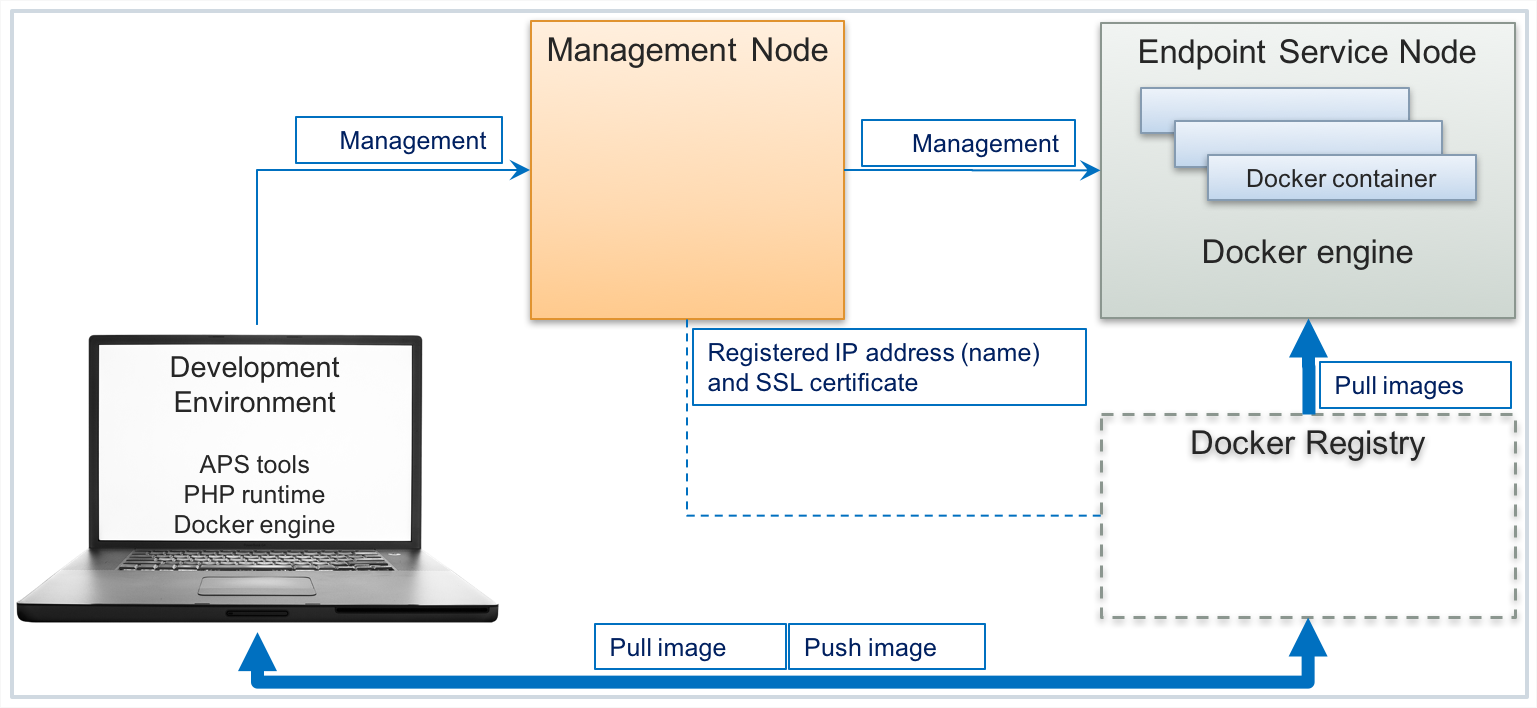Docker-based Deployment¶
APS application developers can simplify the application deployment on the platform by adding the deployment data to the APS package.
In this document:
Deployment Schema¶
The platform simplifies APS connector deployment for providers by supporting the deployment of APS connectors on Docker containers. To get more familiar with that technology, study the Docker documentation.
If you successfully passed the Get Started demo project you have the configured local development environment and a test platform including a server to be used as the endpoint node. Otherwise, prepare your environment as explained in the following sections:
After that, register the server as the APS endpoint service node on the management node as explained in the Register Endpoint Host section.
After completing the above steps, your development environment must look as follows:

Setting a Docker Registry¶
By default the platform is configured to use a Docker registry that might be not available in your installation. Change this to the Docker registry that is used by the APS applications you are going to deploy in your APS ecosystem. Change it in the provider control panel (PCP) as follows:
Navigate to System > Settings and click on the Docker Registry Settings option.
Edit the Docker Registry Hostname as required. If the images of the APS applications are stored in the Docker public registry, the host name is
docker.io.Click
Submitto save the changes.
Configuration Methods¶
The platform allows you to use any methods to create images for Docker containers. For example, you can follow these approaches:
Use the simple method based on a predefined project template
Modify the previous method or use your own method, for example based on the general approach.
